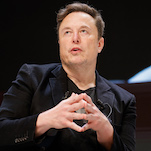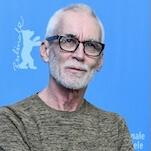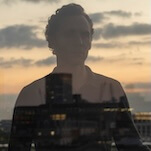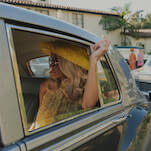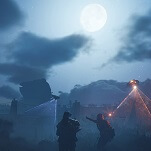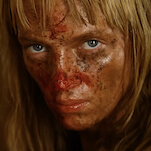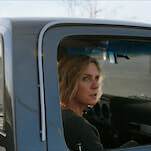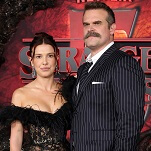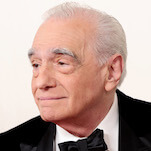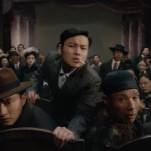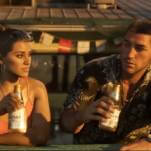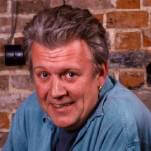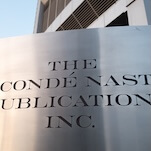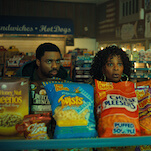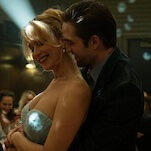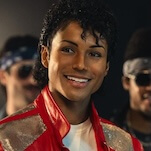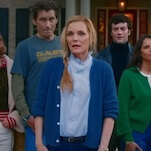I turned my back on the family business at 16. My parents are both chemists, a pair of Walter White crazies who raised me alongside my brother, a hunk of iron named Ferris, and have, when asked, suggested they could turn Sudafed into everyone’s favorite tooth-rotter. Believe me, I know firsthand the seductive power of the elements, all shiny metals and rich hydrocarbons. And in all seriousness, capturing some of that natural awe is what makes Nova work so well.
You know what to expect from the title “Hunting The Elements,” a dad joke of a title that, ignoring the pun, connotes an international quest to understand the different flavors of atom that make up everything we know. It flies all over the world to get as close as it can to its subjects, from California mines to New York’s copper market, from St. Petersburg labs to Yellowstone National Park, from a Florida pier to a mad scientist’s lair. The affable guide is just bursting with “out standing in your field” and “either ore situation” jokes, and more than a few comedy sequences go a bit long, as when he’s tasked with producing a bucket full of urine and we spend a whole montage watching him buy sodas, guzzle them, and enter the men’s room. A basic approach is perfectly appropriate, as in the explanation of the subatomic particles making up the elements, but Pixar aims higher than some of these scenes. And if you’re allergic to anthropomorphizing elements (e.g. “Sodium wants to get rid of its electron”), be prepared for some teeth-gritting.
That said, “Hunting The Elements” is a solid half-semester of Introduction to Chemistry. The order is haphazard, but by the end, it’s taught about atoms, compounds, reactions, isotopes, electricity, and atomic energy. It’s shown seen glimpses of the history of element discovery and organization, from Mendeleev to Seaborg. It’s demonstrated a number of instructive applications of these lessons, at least half of which are just different types of explosions for the MythBusters crowd. And it’s introduced all the families but one, the alkaline earth metals, which are probably too busy strengthening bones and fighting indigestion to come on camera. If, like me, you know-it-all nod your way through the explanations of metallic lattice and half-life, you may still find yourself in moments of nerdy awe.
That partly comes from Nova’s procedural side, which has the added bonus of illustrating vertical integration. Gold is traced from microscopic bits of dust in the wall of a cave to a pyramid of gold bricks pricing in the millions. Copper goes from the futures market to a magnificent bronze bell. What is hoped to be neodymium from a rock of rare earth metals in the only such mine in the United States travels to a laboratory that separates the lookalike elements into three completely different metals. Wherever possible, Nova shows exactly what it looks like to manipulate the elements, from tubes of noble gases to nitrate explosives. We even get to see the individual copper and tin atoms in a slice of bronze, arrays mapped over each other like the stars in the U.S. flag, thanks to Cornell’s electron microscope. In its own way, it’s thrilling. It’s cool to see how sodium, potassium, and aluminum help strengthen silica glass to the point where it can withstand fistfuls of hail. Or to hear the difference between a weak aluminum model and a finished bronze bell. Or to imagine how old stars start to fuse heavier and heavier elements until they supernova, releasing these elements into space. It’s never tiring to hear how 90 percent of atoms in the universe are hydrogen from the Big Bang.
But the nerdiest joys are held in actually seeing the periodic table. No, not the CGI graphic intrusively projected onto scenes for no reason, but a hand-carved wooden table modeled after the periodic table with each element assigned to a quilted inlay. That’s not all. Underneath the square for copper, say, is a chunk of pure, natural copper and an example of its practical use, like coinage. Here’s a basic tungsten light bulb, there’s a malleable hunk of bismuth looking like an Aztec totem. Remove the lids on the noble gases and witness a series of tubes that shine brilliant colors under electric stimulation.
As previously stated, “Hunting The Elements” is counterintuitively structured, but it makes a sort of sense. The episode starts with 15 minutes on gold as the gateway element. Then another 15 on copper to learn about compounds, though tin is purely a supporting character here. Then we get to the periodic table, with a fly-by on halogens and noble gases before it’s off to chemical reactions like combustion, making table salt, and combustion again. Then the six elements that compose 97 percent of life, followed by silicon, silicon’s single-white-female neodymium, and radioactive isotopes. In other words, “Hunting The Elements” is less about covering all of the elements, or even a fair number of them, and more about basic chemistry, which is perfectly fine once you know what to expect. (Personally, I was looking forward to learning what the hell einsteinium is all about. Einsteinium, it turns out, is all about synthesizing mendelevium. The more you know.)
Toward the end, “Hunting The Elements” starts to look to the future, and it’s genuinely, weirdly inspiring. One entrepreneur discovered rare earths like samarium plus lightly negatively charged biological material form a circuit in seawater, so he’s working on mass-marketing shark zappers, er, shark repellent. Other scientists are working to create sustainable fusion. Another spends his time bombarding atoms with neutrons in order to create new elements that are stable for 10-second periods.The point is the periodic table isn’t complete. There are still James Cameron-style frontiers being explored. And not all chemists are pumping the American Southwest full of pretty blue crystals.


